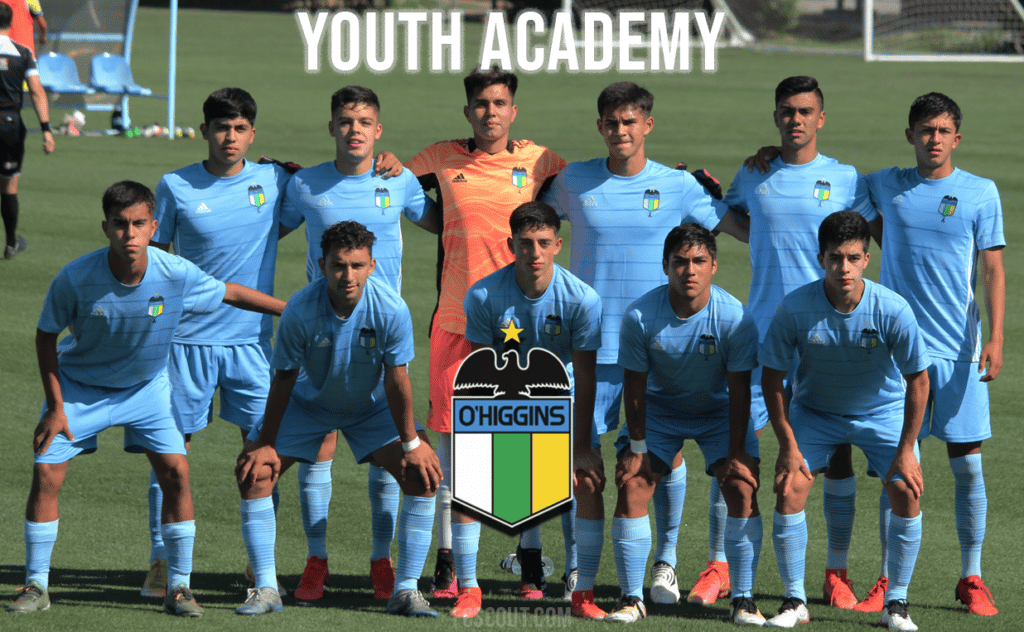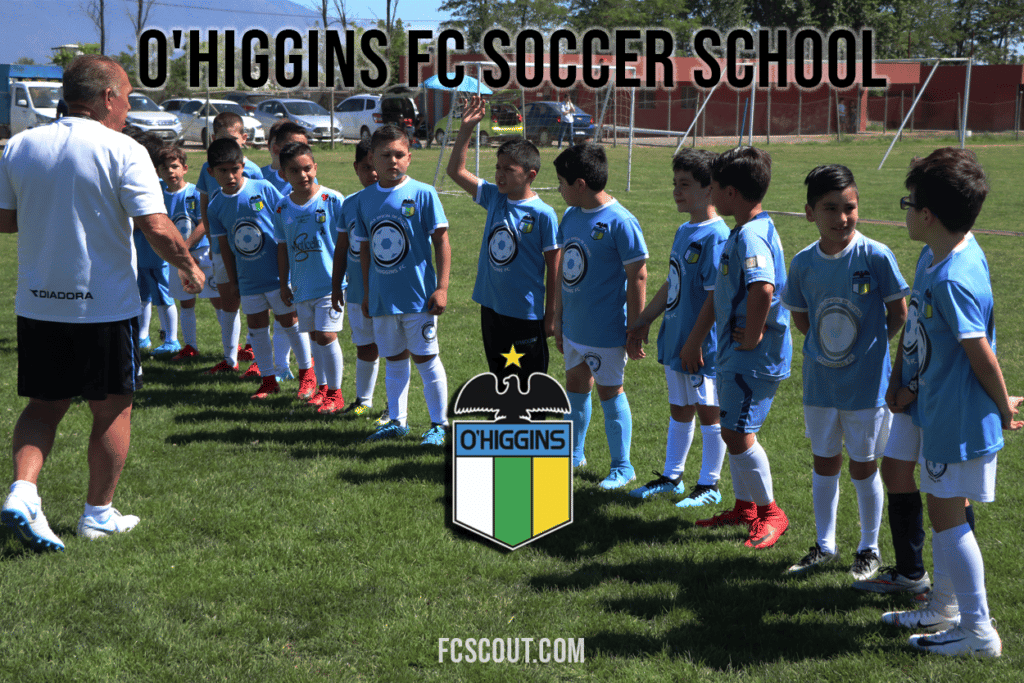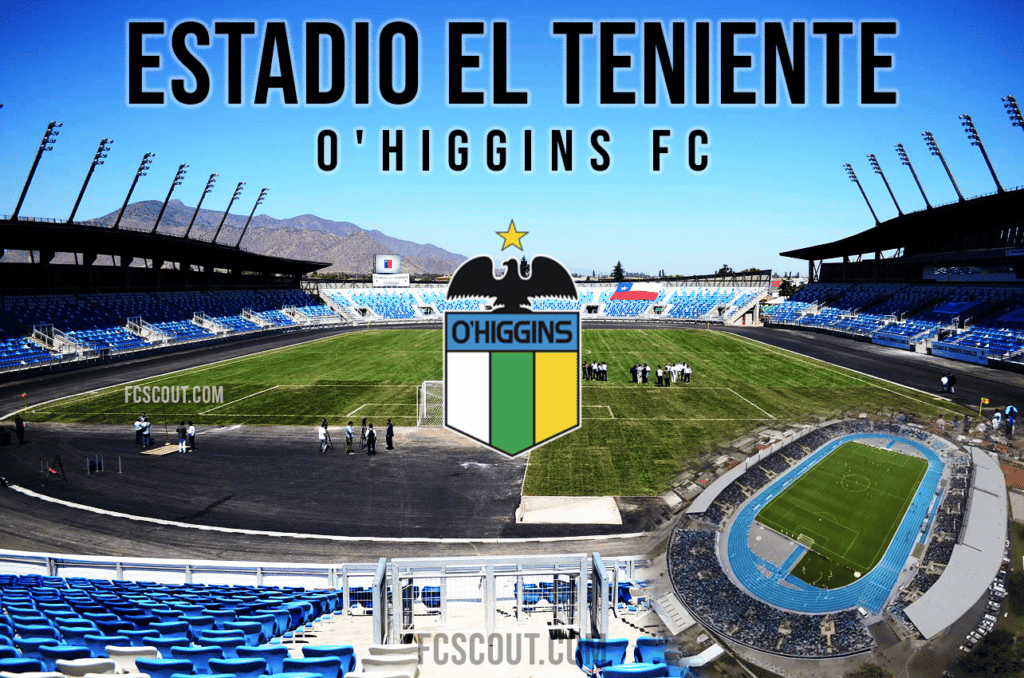O’Higgins FC Tryouts
O’Higgins Fútbol Club is a Chilean fútbol club based in Rancagua, Chile. The club currently plays in the Chilean Primera División, the country’s highest level of professional club fútbol.
O’Higgins FC Youth Development System
O’Higgins FC has been defined as an institution that trains players. Supported by the generosity of this area of the country to award quality soccer players, the club has developed a comprehensive soccer player training model that allows the needs of the professional squad to be constantly nurtured.
For this reason, O’Higgins allows the practice of soccer activity in a massive way from 6 years of age in the traditional Soccer School that operates in Rancagua. Likewise, it currently has competitive categories from the sub 8 series to the sub 19 series.

In recent years, the club has won 8 national championships, 9 vice-championships, 2 Copa Chile and nearly fifty qualifications for the Playoffs stage.
At the international level, his main achievement was the achievement of the Super Cup NI in Ireland in 2016, where the Under 17 Light Blue Series beat Hibernian from Scotland by two goals to zero.
O’Higgins FC Soccer School
Due to the pandemic, the club’s Soccer School has suspended its training until the health situation improves and we can train safely. The restart of our Official Football School will be informed in a timely manner through all our official channels (Website, Twitter, Facebook and Instagram).

O’Higgins FC Recruitment Trials
O’Higgins has developed a recruitment department that seeks to attract players to the club’s Youth Football through a network of observers present in different parts of the O’Higgins Region and the rest of the country. For an updated list of contacts, please click here.
14 OFFICIAL O’HIGGINS SCHOOLS IN CHILE AND THEIR DIRECTORS
Director Nacional: Iván Muñoz Canales.
Región de O’Higgins (7)
- Escuela Filial Rancagua: Manuel Cáceres.
- Escuela Filial Rengo: Boris Leiva (correo: [email protected])
- Escuela Filial San Vicente: Daniel Fabbiani (correo: [email protected])
- Escuela Filial Pichilemu: Jorge Bustamante (correo: [email protected])
- Alianza Escuela Municipal Pumanque: Juan Herrera (correo: [email protected])
- Escuela Filial Graneros: Mauricio Ortega (correo: [email protected])
- Alianza Escuela Municipal de Quinta de Tilcoco: Pablo Calderón (correo: [email protected])
Región Metropolitana (3)
- Escuela Filial Peñalolén: Marco Aguilar (correo: [email protected])
- Alianza OKM Academia de Arqueros: Oscar Machuca (correo: [email protected])
- Alianza Escuela de Fútbol Frutos del Maipo Buin: Juan Serrano (correo: [email protected])
Región del Maule (2)
- Escuela Filial Talca: Orlando Luna (correo: [email protected])
- Escuela Filial Curicó: Jesús Macias Urbina (correo: [email protected])
Región del Bío – Bío (2)
- Escuela Filial Cañete: Harry Guzmán (correo:[email protected])
- Escuela Filial Los Ángeles: Marco Yáñez (correo: [email protected])
EXPLORE MORE CLUBS!
Explore more professional clubs by continent.
O’Higgins FC History
The club was founded on April 7, 1955, following the merging of América de Rancagua’s cross-town opponent, O’Higgins Braden (which was created in 1954 from the union of Braden F.C. and Instituto O’Higgins). Prior to the merger, O’Higgins Braden had been in existence since 1954.
Carlos Dittborn, the head of the Asociación Central de Football, proposed that the name of the O’Higgins, which is the team that represents Codelco workers in the city, be combined with the name of the Braden Copper team. The colors red, blue, and white were taken from the Instituto O’Higgins when they were first chosen for the club. Because the Football Federation of Chile disallowed using the colors of the national team, the team became known as “La Celeste,” after the color of their uniform, which was based on Uruguay’s kit.
The club directors decided that the uniform would be sky blue, based on Uruguay’s kit. The stadium was known as Estadio Braden Copper Firm from the time it was built until the time of the FIFA World Cup in 1962. This name was taken from the name of the firm that owned the stadium. Following that, the name was altered to Estadio El Teniente, which is derived from the mine of the same name.
On April 21, 1955, the Asociación Central de Football made the decision that the team would play in the Primera División for the next season. Nicolás Abumohor would serve as the first president of the association, and Francisco Hormazábal would be the first head coach of the team. In the first ever league tournament, the team finished in ninth place, which qualified them for the relegation play-offs. In the play-offs, the squad was able to successfully defend their position in the top tier.
The first outstanding season for the club was in 1959, when Argentine coach José Salerno led the team to fourth place, just four points behind Universidad de Chile, the league champion, and ahead of Santiago Wanderers, in third place, on goal differential. This was the club’s first outstanding season.
The team had one of its most successful seasons in the Primera División, with José Benito Rós serving as a vital player and finishing as the league’s leading goal scorer with 22 tallies. Following a less-than-stellar performance in the 1963 campaign, the team was relegated to the Segunda División a few years later. After signing Federico Vairo, a defender, and Mario Desiderio, an attacking midfielder, both of whom had previous experience playing in the Argentine Primera División, the squad was promoted to the Primera División the following season.
The Rancagua supporters who voted for the Rosarian center back to get the title in 1999 stated that they did so because they believed that Vairo’s accomplishments especially propelled him to the position of greatest footballer in the club’s history. The club has enjoyed average seasons since it was elevated in 1964, finishing in the middle of the table each time. This is despite the fact that Federico Vairo and Mario Desiderio moved to a team in Colombia called Deportivo Cali in 1966.
For the 1996 season, the squad acquired some exceptional players, such as the midfielder Clarence Acua, the Argentine maestro Gerardo Martino, as well as the strikers Carlos Poblete and Ariel Cozzoni. However, as a result of the team’s poor performance in the standings, they were relegated to the Primera B. Due to the fact that it wasn’t used in the Clausura, the format of an Apertura and Clausura that was employed in 1997 made it difficult to get promoted. Although O’Higgins had outstanding seasons that year and finished in the top four in both competitions, it was not able to move on to the next round.
During the 2005 season, Nelson Cossio, a former goalkeeper for the squad, was promoted to the role of team manager. However, following a run of six defeats in a row, the team started to distance itself from the slots eligible for promotion. After a scoreless tie in August versus Deportes Copiapó, Cossio was terminated from his position as head coach. Shortly after Cossio was let go from his position as president of ANFP, Ricardo Abumohor, who had previously held that position, purchased the team from Codelco.
In order for the club to compete in the Primera División again, his primary objective was to win the Primera B championship. Hugo Brizuela and Mario Nez were two of the important players in the club’s promotion victory over Deportes Melipilla. The victory, which was won 4-3 on aggregate thanks to the appointment of manager Gerardo Silva as Cossio’s replacement, came about as a result of the club appointing Gerardo Silva as Cossio’s replacement.
Because O’Higgins finished in third place in the 2014 Clausura with 30 points and in second place in the Accumulated Table with 69 points (beating out Colo-Colo, the team that won the Clausura), it was eligible to compete in the Supercopa de Chile, which was held to determine the Superchampion.
The match took place at the Estadio San Carlos de Apoquindo between the team and Deportes Iquique, who had won the Copa Chile in the previous season. Iquique grabbed the lead in the game thanks to a goal scored by Rodrigo Ezequiel Dáz, but Luis Pedro Figueroa scored for O’Higgins five minutes before the end of the first half to square it up. The game was forced into penalties because after 120 minutes of play the score was still knotted at one each. O’Higgins came out on top with a 3-2 score.
O’Higgins FC Stadium
Home games for the team are played at Estadio El Teniente, which is also known as Braden Copper Company Stadium due to the fact that the stadium is owned by Braden Copper Company. At September of 1945, construction began in Rancagua on the building.
In the very first match ever played at the professional level, which took place in 1955 in the Primera División competition, O’Higgins prevailed over Ferrobadminton by a score of 3-2. Due to the magnitude 9.5 earthquake that occurred in Valdivia in 1962, Antofagasta and Valparaso both declined the opportunity to host the FIFA World Cup. In 1960, the Chilean delegation presented Rancagua as an alternative destination for the World Cup.
On May 30, Argentina defeated Bulgaria in the first ever game played at the international level, which was won by the South American nation courtesy to a goal scored by Héctor Facundo. El Teniente, the host stadium, served as the location for all of Group D’s matches as well as the quarterfinal match between West Germany and Yugoslavia.

In 1967, Codelco Chile purchased 51 percent of the shares held by the Braden Copper Company, which was based in the United States. This action was part of the larger process of nationalizing the copper industry, which was completed in 1971.
In recognition of the mine that can be found in the Machal area, the previous name of the business was changed to Parque El Teniente. Ricardo Abumohor, the owner of the club, made the announcement in 2013 that a new stadium would be built with a capacity of 14,087 people, and the old stadium was demolished the following year, in 2014.
The brand-new stadium hosted its grand opening ceremony on April 8th, 2014. In the first match of week 6 of the 2014 Copa Libertadores, O’Higgins played Lans. Lans was the opponent. The fact that the club finished with a score of 0-0 meant that it was eliminated from the competition because it required a victory to advance to the next stage of the competition. In 2015, it played host to two games in the group stage of the Copa America.







